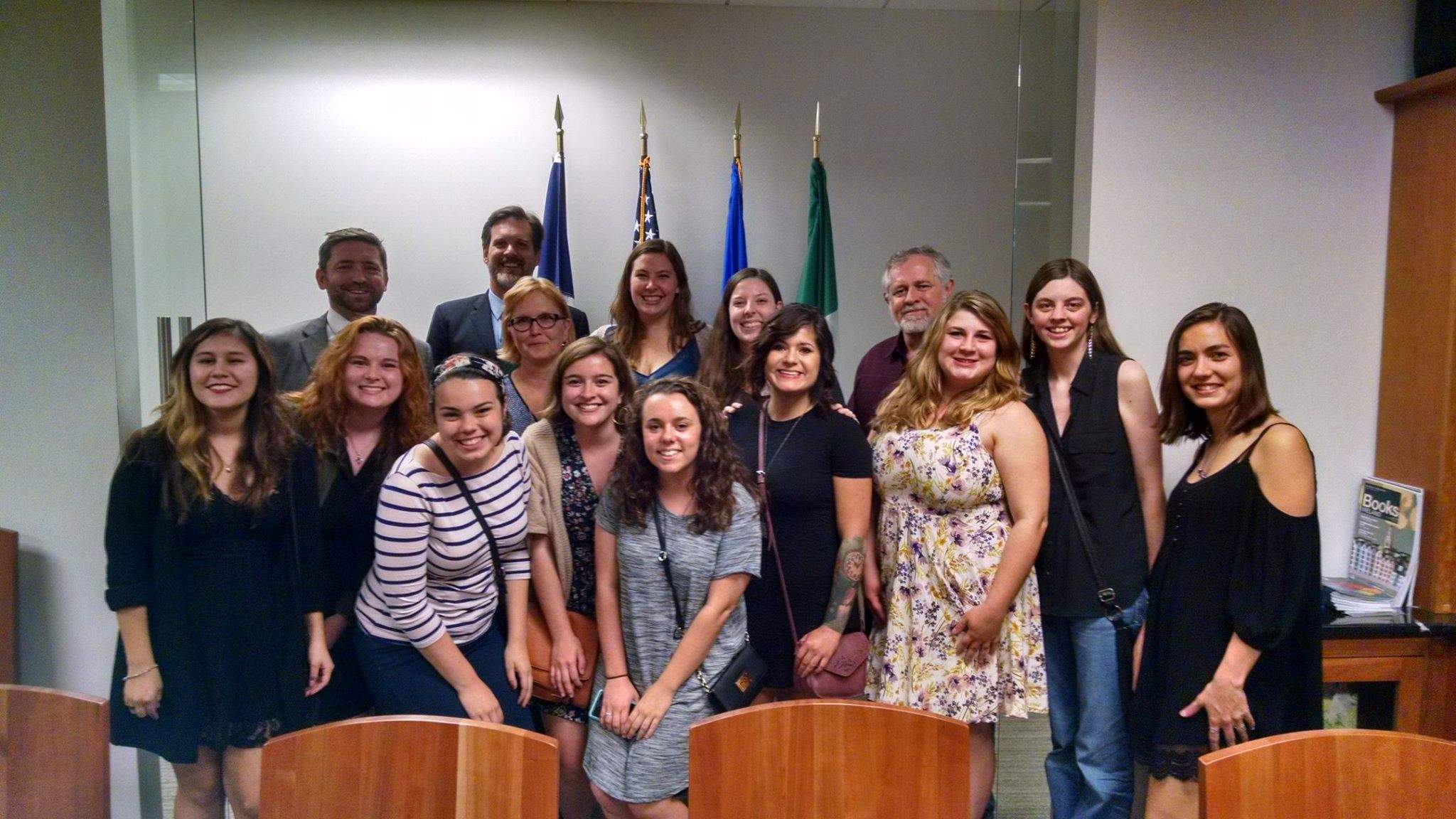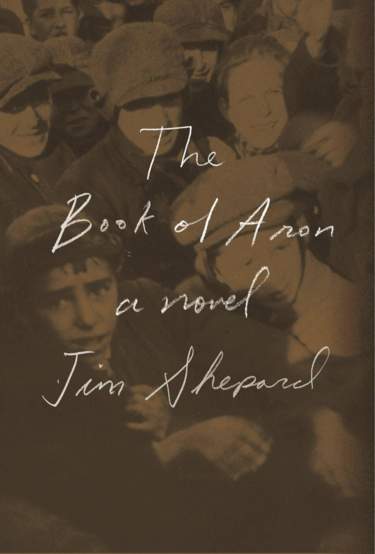TS: Many of your short stories and novels, including The Book of Aron, are told in first-person point-of-view. What did you find most challenging in writing from Aron’s point-of-view?
JS: Well, getting his voice right, of course. I started researching by reading first-person accounts of Polish childhoods in the 1920s and 30s—and there were lots of those—with a special attentiveness to the voices. I’m sure the project felt like such an act of hubris that I’d already decided to use the first person in order to go at the problem of authority head-on, as it were, and I told myself that if I couldn’t begin to master my protagonist’s voice to my own satisfaction, then I couldn’t adequately imagine his inner life, either, in which case I should just drop the whole thing. I also wanted to, by limiting myself to a single first-person sensibility, evoke the way in which the dread of what’s coming is always there in the reader’s mind but is opaque to those in the historical moment. One of the pleasures that fiction can deliver is, of course, the god-like ability to flit from sensibility to sensibility—to penetrate everyone’s consciousness, and to know with certainty what everyone is thinking: a mobility and omniscience that we never in our regular lives get to experience. Anotherpleasure that fiction can offer, though, is the opportunity to inhabit a single, other sensibility, as limited (or perhaps even more limited) than our own, as fully as possible. Both pleasures are exercises in the empathetic imagination, but for me the latter option nearly always seems, when done well, more bracingly revelatory as a crash course in empathy. And I tend to believe that most of us need as bracingly revelatory a crash course in empathy as we can get.
TS: There are many gruesome events that happen in this novel, yet it never feels like a simple catalogue of suffering, primarily because of Aron’s idiosyncrasies in telling his story. Can you discuss how you were able to achieve this balance of conveying the horrors, yet still making them human?
JS: There’s always the tightrope walk when writing about suffering—and especially extreme and/or mass suffering—between sanitizing events and sensationalizing them. Usually it’s a matter of recognizing how much agony does need to be conveyed, and at the same time recognizing when any more seems gratuitous. Which is of course easier said than done. But there’s also the importance of the understanding that for those living through such times, the suffering becomes quotidian – and as such, the quotidian can compete with it. So that someone’s soup becomes as notable an event as a beating.
TS: In other interviews, you’ve spoken about your obsession with the issue of agency in fiction: “with that portion of responsibility that we have for what happens to us.” Could you discuss how responsibility and agency work in the novel?
JS: Aristotle’s notion of literature involved flaws of character that produced behavior for which the character then had to take some sort of responsibility, and I believe that literary conflict is about agency; it’s about those decisions we make once we’re faced with whatever the world has unleashed upon us. So that: the Germans invading your country is hugely dramatic, but not in itself a conflict, in that sense. What you do about that invasion is.
TS: One of the major conflicts of the book seems to be this question: What are we willing to do to survive (The Jewish Police, Aron and his band of smugglers, Korzac’s unwillingness at the end)? As Lejkin, a member of the Judenrat, tells Aron, “If the [Germans] have enough time, they’ll kill us all. If not, some can be saved;” of course, being saved here means turning on your neighbors. Can you discuss this aspect of the book?
JS: See my previous answer. One of the reasons we’re drawn to such stories, despite their unpleasantness, is our fascination with how human beings operate when faced with such impossible choices. If it meant saving your brother, would you answer an interrogator honestly about your neighbor? And at what point would you cease cooperating with an oppressive regime?
TS: In the opening lines of the book, Aron says his father wanted to name him, “What Have You Done,” because Aron is a troublemaker who “only looks out for himself”; yet Aron’s mother sees him as the readers see him, as conflicted, as someone who’s maybe 51 percent good and 49 percent bad. But even still, Aron’s mother implores him to “remain a decent human being.” In the face of so much atrocity, is decency merely an illusion?
JS: No, decency is most certainly not just an illusion. In the face of the most extreme circumstances, it just rarely survives as an untainted category.
TS: One of the elements that I found so striking about this novel was its depiction of the daily horrors of living in the ghetto (the constant battle against lice, the waves of typhus, the number of people living in one small apartment, etc.) Why did you chose to incorporate these details, while many other writers have foregone these details in the face of the larger, more terrifying horrors of this period of history?
JS: I was struck during my engagement with all those journals and diaries by how much, again, the quotidian dominated the thinking of those trapped in the Ghetto, as in: let’s just get through today, and let tomorrow worry about itself. That mindset meant that there was less thinking about the Big Picture and more about the smaller and more concrete aspects of experience.
TS: Throughout much of the book, adults are peripheral—their overheard conversations, the brothers and the father; not quite as much the mother, but even with her, there is some psychological distance—so why do you think Aron becomes so close to Dr. Korczak? Put another way, what is so attracting about a figure like Korczak?
JS: Korczak’s legendary capacity to hang on to so much of his decency, and his kindness, and his selflessness, made him a magnet for all of those children like my narrator who were pained at what they’d already done to survive, and who longed to imagine that they could still renovate themselves for the better.
TS: In many places, there are threads of dark humor, especially from Korczak. Did you worry about trying to accomplish this in a book about the Holocaust? How were you able to incorporate this into the novel?
JS: I didn’t worry about the appropriateness of the relationship between dark humor and the Holocaust, since I wasn’t adding the dark humor, as if in a recipe; I was coming across it again and again in the primary documents. It’s clear from the historical record that those who didn’t give up or become entirely unfeeling had to employ humor in some way to cope with what they understood to be the grotesque absurdity of their situation.
TS: Some might argue that stories about the Holocaust are unethical because they involve an appropriation of others’ suffering. Did you feel concern about this while you were writing, and, if so, how were you able to overcome this?
JS: Of course that was a huge concern of mine, when approaching a subject like this. And it’s been a commonplace claim about the relationship between the Holocaust and the arts that the enormity of the suffering and horror defeats any attempt at adequate representation. But books like Jona Oberski’s Childhood reminded me that by making a child our guide to such infernal regions, a work could enact any number of ways in which the impossible facts of the Holocaust make children of us all. And maybe such a work could also then evoke both the necessity and the inherent impossibility of our hope of adequately testifying about anyone else’s pain.
TS: Lastly, could you share some thoughts on what it means to win the inaugural Clark Fiction prize?
JS: I’m one of those people who believes that the proper response to winning any award is humility, given how much good fortune has to come together to make that happen. And humility seems to be even more in order when the subject of your project involves extremities of suffering, and on top of that, extremities of suffering that have taken place at an enormous remove from your own experience. So: it’s a great honor, and one for which I’m hugely grateful.
 On October 28, The Austin office of the Irish Consulate hosted students from the 2016 Texas State in Ireland program for a reception and conversation on their five-week stay in Ireland this past summer. Consul General Adrian Farrell encouraged the students to share their impressions of Ireland, noting the growing cooperation between the Republic of Ireland and the Austin area, as well as the long history of the Irish in Texas and the southwest. Consul Farrell and the students were joined at the reception by Dr. Ryan Buck, Texas State’s Assistant Vice President for International Affairs. The Texas State in Ireland program, directed by English Department faculty members Nancy and Steve Wilson, has taken Texas State students to Cork, Ireland each summer since 1999, allowing more than 300 of them to explore a vibrant country that was home to the ancestors of millions of Americans. While in Ireland, the students from the 2016 program visited such cultural sites as Dublin; medieval Ross Castle, in Killarney; 10th-century Celtic settlements on the Dingle Peninsula; Gougane Barra Forest Park, in the Shehy Mountains of County Cork; and Great Blasket Island, a rugged outpost off the western coast. They also earned six hours of credit for completing advanced English courses in Travel Writing and Irish Literature. Steve Wilson noted at the reception that the program offers students the opportunity to be much more than travelers. They are encouraged to investigate the country and its people, discovering common ground with the Irish but also the important ways peoples of different cultures interact with and understand their world.
On October 28, The Austin office of the Irish Consulate hosted students from the 2016 Texas State in Ireland program for a reception and conversation on their five-week stay in Ireland this past summer. Consul General Adrian Farrell encouraged the students to share their impressions of Ireland, noting the growing cooperation between the Republic of Ireland and the Austin area, as well as the long history of the Irish in Texas and the southwest. Consul Farrell and the students were joined at the reception by Dr. Ryan Buck, Texas State’s Assistant Vice President for International Affairs. The Texas State in Ireland program, directed by English Department faculty members Nancy and Steve Wilson, has taken Texas State students to Cork, Ireland each summer since 1999, allowing more than 300 of them to explore a vibrant country that was home to the ancestors of millions of Americans. While in Ireland, the students from the 2016 program visited such cultural sites as Dublin; medieval Ross Castle, in Killarney; 10th-century Celtic settlements on the Dingle Peninsula; Gougane Barra Forest Park, in the Shehy Mountains of County Cork; and Great Blasket Island, a rugged outpost off the western coast. They also earned six hours of credit for completing advanced English courses in Travel Writing and Irish Literature. Steve Wilson noted at the reception that the program offers students the opportunity to be much more than travelers. They are encouraged to investigate the country and its people, discovering common ground with the Irish but also the important ways peoples of different cultures interact with and understand their world. On October 28, The Austin office of the Irish Consulate hosted students from the 2016 Texas State in Ireland program for a reception and conversation on their five-week stay in Ireland this past summer. Consul General Adrian Farrell encouraged the students to share their impressions of Ireland, noting the growing cooperation between the Republic of Ireland and the Austin area, as well as the long history of the Irish in Texas and the southwest. Consul Farrell and the students were joined at the reception by Dr. Ryan Buck, Texas State’s Assistant Vice President for International Affairs. The Texas State in Ireland program, directed by English Department faculty members Nancy and Steve Wilson, has taken Texas State students to Cork, Ireland each summer since 1999, allowing more than 300 of them to explore a vibrant country that was home to the ancestors of millions of Americans. While in Ireland, the students from the 2016 program visited such cultural sites as Dublin; medieval Ross Castle, in Killarney; 10th-century Celtic settlements on the Dingle Peninsula; Gougane Barra Forest Park, in the Shehy Mountains of County Cork; and Great Blasket Island, a rugged outpost off the western coast. They also earned six hours of credit for completing advanced English courses in Travel Writing and Irish Literature. Steve Wilson noted at the reception that the program offers students the opportunity to be much more than travelers. They are encouraged to investigate the country and its people, discovering common ground with the Irish but also the important ways peoples of different cultures interact with and understand their world.
On October 28, The Austin office of the Irish Consulate hosted students from the 2016 Texas State in Ireland program for a reception and conversation on their five-week stay in Ireland this past summer. Consul General Adrian Farrell encouraged the students to share their impressions of Ireland, noting the growing cooperation between the Republic of Ireland and the Austin area, as well as the long history of the Irish in Texas and the southwest. Consul Farrell and the students were joined at the reception by Dr. Ryan Buck, Texas State’s Assistant Vice President for International Affairs. The Texas State in Ireland program, directed by English Department faculty members Nancy and Steve Wilson, has taken Texas State students to Cork, Ireland each summer since 1999, allowing more than 300 of them to explore a vibrant country that was home to the ancestors of millions of Americans. While in Ireland, the students from the 2016 program visited such cultural sites as Dublin; medieval Ross Castle, in Killarney; 10th-century Celtic settlements on the Dingle Peninsula; Gougane Barra Forest Park, in the Shehy Mountains of County Cork; and Great Blasket Island, a rugged outpost off the western coast. They also earned six hours of credit for completing advanced English courses in Travel Writing and Irish Literature. Steve Wilson noted at the reception that the program offers students the opportunity to be much more than travelers. They are encouraged to investigate the country and its people, discovering common ground with the Irish but also the important ways peoples of different cultures interact with and understand their world.



